#Toucouleur Empire
Text
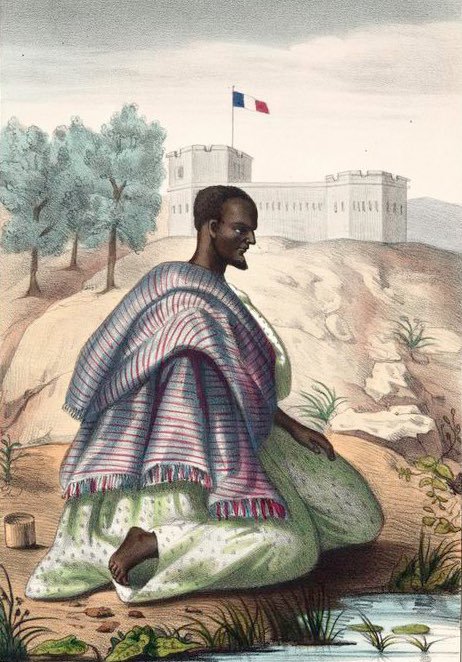
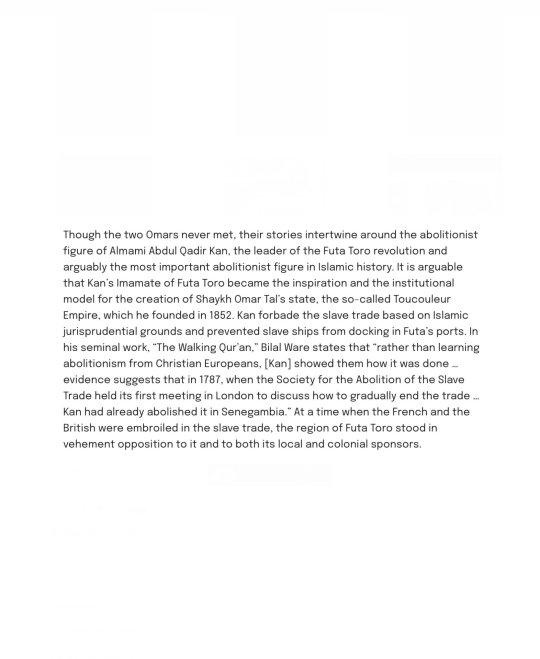
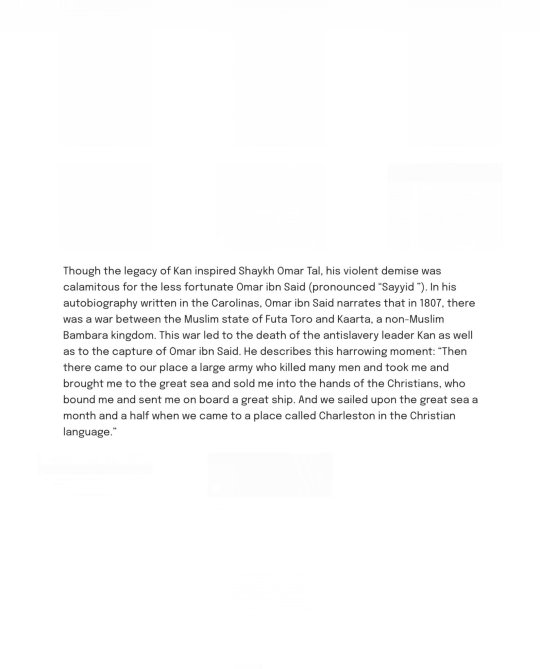
#abolition#islamic history#african history#Imam abd al-qadir kan#Bambara#transatlantic slave trade#Toucouleur Empire
2 notes
·
View notes
Photo

The Sahara and the Sahel were marked in the 19th century by a series of holy wars, modifying societies and state structures. Some men and groups question the powers that be. Dan Fodio founded the Caliphate of Sokoto and El-Hadj Omar the Toucouleur empire.
by @LegendesCarto
79 notes
·
View notes
Photo

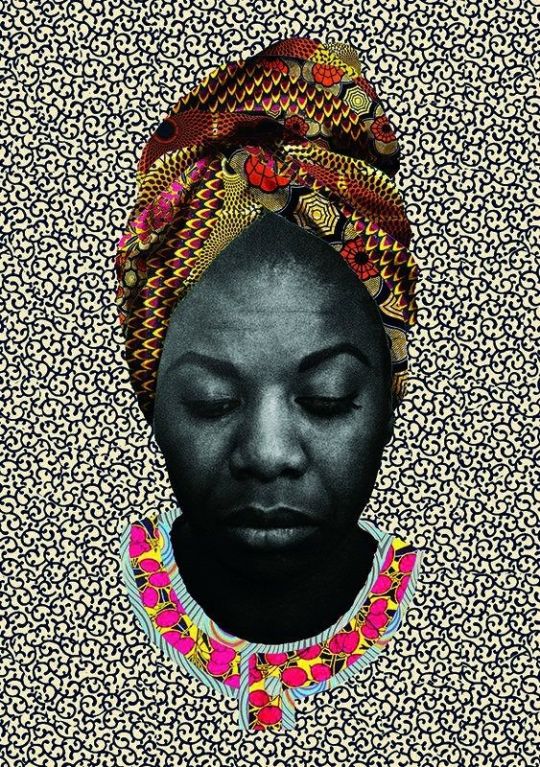

Nina Simone, was an American singer, songwriter, musician, arranger, and civil rights activist. Her music spanned a broad range of musical styles including classical, jazz, blues, folk, R&B, gospel, and pop.

The Yoruba people (Yoruba: Ìran Yorùbá) are an ethnic group that inhabits western Africa, mainly the countries of Nigeria, Benin, and Togo.
The Yoruba diaspora consists of two main groupings; first were Yorubas dispersed through Atlantic slave trade mainly to the western hemisphere and the second wave includes relatively recent migrants, the majority of which moved to the United Kingdom and the United States after major economic and political changes in the 1960s to 1980s
As an ethnic description, the word "Yoruba" (or more correctly "Yaraba") was originally in reference to the Oyo Empire
The alternative name Akú, derived from the first words of Yoruba greetings (such as Ẹ kú àárọ? "good morning", Ẹ kú alẹ? "good evening") has survived in certain parts of their diaspora as a self-descriptive, especially in Sierra Leone
The Yoruba are among the most urbanized people in Africa. For centuries before the arrival of the British colonial administration most Yoruba already lived in well structured urban centres organized around powerful city-states (Ìlú) centred around the residence of the Oba.In ancient times, most of these cities were fortresses, with high walls and gates.Yoruba cities have always been among the most populous in Africa. Archaeological findings indicate that Òyó-Ilé or Katunga, capital of the Yoruba empire of Oyo (fl. between the 11th and 19th centuries CE), had a population of over 100,000 people. For a long time also, Ibadan, one of the major Yoruba cities and founded in the 1800s, was the largest city in the whole of Sub Saharan Africa. Today, Lagos (Yoruba: Èkó), another major Yoruba city, with a population of over twenty million, remains the largest on the African continent
Ife continues to be seen as the "Spiritual Homeland" of the Yoruba. The city was surpassed by the Oyo Empire as the dominant Yoruba military and political power in the 11th century.
The Oyo Empire under its oba, known as the Alaafin of Oyo, was active in the African slave trade during the 18th century. The Yoruba often demanded slaves as a form of tribute of subject populations,who in turn sometimes made war on other peoples to capture the required slaves. Part of the slaves sold by the Oyo Empire entered the Atlantic slave trade.
Most of the city states were controlled by Obas (or royal sovereigns with various individual titles) and councils made up of Oloyes, recognised leaders of royal, noble and, often, even common descent, who joined them in ruling over the kingdoms through a series of guilds and cults. Different states saw differing ratios of power between the kingships and the chiefs' councils. Some, such as Oyo, had powerful, autocratic monarchs with almost total control, while in others such as the Ijebu city-states,the senatorial councils held more influence and the power of the ruler or Ọba, referred to as the Awujale of Ijebuland, was more limited

The Yoruba religion comprises the traditional religious and spiritual concepts and practices of the Yoruba people. Its homeland is in Southwestern Nigeria and the adjoining parts of Benin and Togo, a region that has come to be known as Yorubaland. Yoruba religion is formed of diverse traditions and has no single founder.Yoruba religious beliefs are part of itan, the total complex of songs, histories, stories and other cultural concepts that make up the Yoruba society.
One of the most common Yoruba traditional religious concepts has been the concept of Orisa. Orisa (also spelled Orisha or Orixa) are various godly forms that reflect one of the various manifestations or avatars of God in the Yoruba religious system. Some widely known Orisa are Ogun, (a god of metal, war and victory), Shango or Jakuta (a god of thunder, lightning, fire and justice who manifests as a king and who always wields a double-edged axe that conveys his divine authority and power), Esu Elegbara (a trickster who serves as the sole messenger of the pantheon, and who conveys the wish of men to the gods.
He understands every language spoken by humankind, and is also the guardian of the crossroads, Oríta méta in Yoruba) and Orunmila (a god of the Oracle). Eshu has two avatar forms, which are manifestations of his dual nature – positive and negative energies; Eshu Laroye, a teacher instructor and leader, and Eshu Ebita, a jester, deceitful, suggestive and cunning.Orunmila, for his part, reveals the past, gives solutions to problems in the present, and influences the future through the Ifa divination system, which is practised by oracle priests called Babalawos.

Olorun is one of the principal manifestations of the Supreme God of the Yoruba pantheon, the owner of the heavens, and is associated with the Sun known as Oòrùn in the Yoruba language. The two other principal forms of the supreme God are Olodumare—the supreme creator—and Olofin, who is the conduit between Òrunn (Heaven) and Ayé (Earth).
Oshumare is a god that manifests in the form of a rainbow, also known as Òsùmàrè in Yoruba, while Obatala is the god of clarity and creativity.as well as in some aspects of Umbanda, Winti, Obeah, Vodun and a host of others.
These varieties, or spiritual lineages as they are called, are practiced throughout areas of Nigeria, among others. As interest in African indigenous religions grows, Orisa communities and lineages can be found in parts of Europe and Asia as well. While estimates may vary, some scholars believe that there could be more than 100 million adherents of this spiritual tradition worldwide

The Fula, Fulani, or Fulɓe people are one of the largest ethnic groups are widely distributed, across the Sahel from the Atlantic coast to the Red Sea, particularly in West Africa. The countries where they are present include Mauritania, Ghana, Senegal, Guinea, the Gambia, Mali, Nigeria, Sierra Leone, Benin, Burkina Faso, Guinea Bissau, Cameroon, Ivory Coast, Niger, Chad, Togo, South Sudan, the Central African Republic, Liberia, and as far east as the Red Sea in Sudan and Egypt.
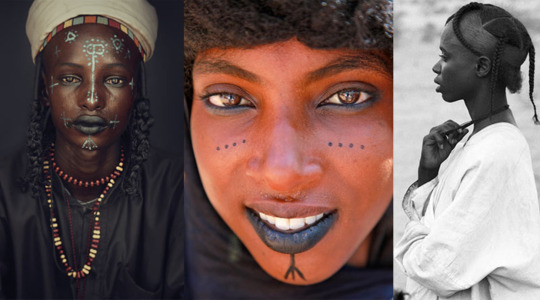
Walter Rodney in his book The History of the Upper Guinea Coast, argues that Fulbe are originally from North Africa and they conquered the Foota Djallon region led by the Fulani Koli Tenguella.

The ethnogenesis of the Fulani people may have begun as a result of interactions between an ancient West African population and North African populations such as Berbers or Egyptians. Their West African roots may be in and around the valley of Senegal River. They likely reflect a genetic intermix of people with West African, North African, and Arabian origins, and have been a part of many ruling dynasties particularly in the Sahel and West Africa .Speculations about their origins started in the era of European conquest and colonization.

The language of the Fulani is "Pulaar", which is also the language of the Toucouleurs. All Senegalese and Mauritanians who speak the language natively are known as the Halpulaa or Haalpulaar'en , which means "speakers of Pulaar" ("hal" is the root of the Pulaar verb haalugol , meaning "to speak"). In some areas, e.g. in northern Cameroon, Fulfulde is a local lingua franca.
There are three writing systems used to write this language: an Arabic derived one called Ajami, a Latin derived system with 6 sets, and a native phonetic-faithful system called Adlam recently invented in 1989; the third one is the most increasingly popular not only learnt by hundred thousands of people among the diaspora worldwide but has also apps and computer programs created to assist in the script's adoption.
Moral code
Central to the Fulani people's lifestyle is a code of behavior known as pulaaku or laawol Fulɓe (literally meaning the "Fulani pathways" which are passed on by each generation as high moral values of the Fulbe, which enable them to maintain their identity across boundaries and changes of lifestyle. Essentially viewed as what makes a person Fulani, or "Fulaniness", pulaaku includes:
Munyal: Patience, self-control, discipline, prudence
Gacce / Semteende: Modesty, respect for others (including foes)
Hakkille: Wisdom, forethought, personal responsibility, hospitality
Sagata / Tiinaade: Courage, hard work

#african#nina simone#yoruba#fula#fulani#munyal#wisdom#kemetic dreams#brownskinwoman#brownskin#brownskins#west africa#egypt#orisha#vodun#vodoo#african spirituality#african culture#african dna#africanancestrydna#africanancestry#crystal fox#manifest#manifestion#nigeria#nigerian#fulani pathways#keep your head up#who are you#african pride
609 notes
·
View notes
Text
Ndiadiane Ndiaye
The (possibly mythical) Ndiadiane Ndiaye was the founder of the Wolof empire. Stories of his ancestry vary but agree that he was the son of a foreign nobility. His first words were always in Pulaar rather than Wolof.
As the legend goes, he was born Ahmad Abu Bakr (14th century), and he fled his family in rejection of an arranged marriage and lived for three years in a cave near a river. When some fishermen got into a quarrel over some wood, Ndiaye came out of the water and divided it fairly before anything could escalate to bloodshed. In recognition of his wisdom, he was made king of Waalo, where he reigned for a few years.
When he learned of a plot against him, Ndiaye voluntarily left and settled in Wolof. It was here that he founded the Wolof Empire, bringing together landowners and disparate nations. It was a voluntary union between the Wolof, Serer, and Toucouleur kingdoms (different stories claim his ancestry in some or all of these groups).
The Wolof (or Jolof, Wollof, Djolof, etc.) Empire was a Senegambian state that grew peacefully and without any conquest. Landowners and existing power structures remained in power. Their political system was, according to Portuguese explores, very advanced. Their culture was incredible and included artisans, craftspeople, and griots (a historian/musician in charge of preserving oral tradition and advising leaders). While women's rights in marriage were limited, they were well represented in politics in multiple offices.
#history#world history#african history#black history#west african history#senegal#gambia#senegambia#wolof#jolof#empire#women's rights#historican figures#long post
13 notes
·
View notes
Text
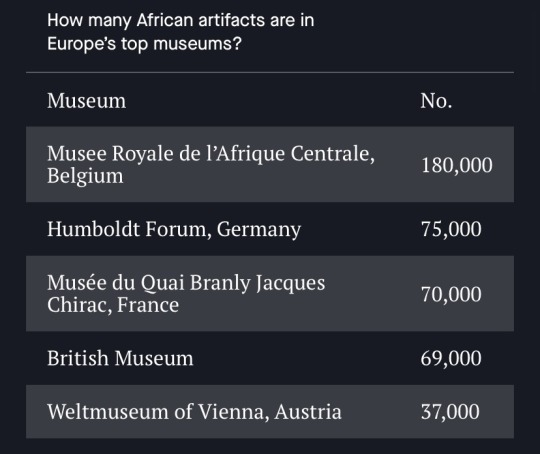
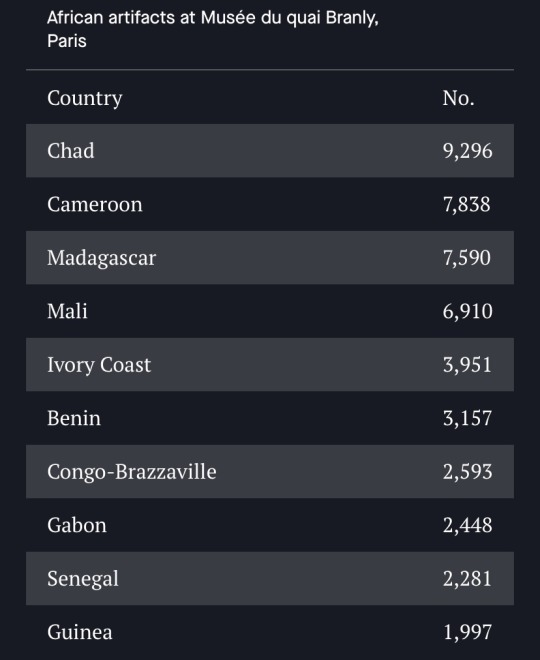
In 1890, the French staged a bloody siege in the Segou royal palace, the capital of the Toucouleur empire that spanned modern day Guinea, Senegal and Mali. This siege and the violent capture of the city of Ouossebougou in 1890 marked the end of the Toucouleur empire and the transfer of control of the region to French colonial rule.
In addition to the loss of lives and the destruction of property, the French officials plundered over a thousand pieces of significant cultural heritage to the people—including the saber of the founder of the empire, El Hadj Omar Tall.
https://qz.com/africa/1758619/europes-museums-are-fighting-to-keep-africas-stolen-artifacts/amp/
9 notes
·
View notes
Text
France Returns to Senegal an 18th-Century Saber That It Looted During the Colonial Period

The French prime minister Edouard Philippe handed over an important historical artifact that was confiscated during the colonial period to the Senegalese president Macky Sall yesterday.
The iron, brass, leather, and wood saber and scabbard belonged to Omar Saïdou Tall, an 18th-century military leader and founder of the short-lived Toucouleur empire, which encompassed parts of Guinea, Senegal, and Mali. The sword was seized from Tall’s son Ahmadou by the French in 1893 after they defeated him in battle in Mali. It had been part of the collection of Paris’s Army Museum but has been on loan to Dakar’s Museum of Black Civilizations for the past few months as part of France’s effort to right colonial wrongs.
One year ago, French president Emmanuel Macron made a historic speech in Ouagadougou, during which he declared that the conditions for either the temporary or permanent restitution of African cultural heritage held in French museums would be set within five years. Since then, however, the momentum of the restitution debate has slowed while French politicians hash out the legal framework that would allow for full restitution— Read more.
364 notes
·
View notes
Text
I See You

Name: Senegal
Demonym: Senegalese
Etymology: Senegal is translated from the Wolof “sun gal” to mean “our boat”.
Capital: Dakar
Motto: "Un Peuple, Un But, Une Foi" (French)
"One People, One Goal, One Faith"
Location: West Africa
Population: 16,313,742 (2018)
Religion: Islam is the predominant religion in the country, practiced by approximately 94% of the country’s population; the Christian community, at 5% of the population, are mostly Roman Catholics.
Climate: Sahelian
Language(s) Spoken: French and Wolof
National Languages: Balanta-Ganja, Hassaniya Arabic, Jola-Fonyi, Mandinka, Mandjak, Mankanya, Noonm, Pulaar, Serer, Soninke
Currency: CFA franc (XOF)
Independence Day:
- From France 4 April 1960
- Withdrawal from the Mali Federation 20 August 1960
Flag meaning: The red, yellow and green are the official Pan-African colors, and the centered star is symbolic of hope and unity.
Brief History
Archaeological findings throughout the area indicate that Senegal was inhabited in prehistoric times and has been continuously occupied by various ethnic groups.
Some kingdoms were created around the 7th century: Takrur in the 9th century, Namandiru and the Jolof Empire during the 13th and 14th centuries. Eastern Senegal was once part of the Ghana Empire.
Islam was introduced through Toucouleur and Soninke contact with the Almoravid dynasty of the Maghreb, who in turn propagated it with the help of the Almoravids, and Toucouleur allies.
This movement faced resistance from ethnicities of traditional religions, the Serers in particular.
In the 13th and 14th centuries, the area came under the influence of the empires to the east; the Jolof Empire of Senegal was also founded during this time.
In the 14th century the Jolof Empire grew more powerful, having united Cayorand the kingdoms of Baol, Sine, Saloum, Waalo, Futa Tooro and Bambouk, ormuch of present day West Africa.
The empire was a voluntary confederacy of various states rather than an empire built on military conquest.
The empire was founded by Ndiadiane Ndiaye, a part Serer and part Toucouleur, who was able to form a coalition with many ethnicities, but collapsed around 1549 with the defeat and killing of Lele Fouli Fak by Amari Ngone Sobel Fall.
Colonial Era
In the mid-15th century, the Portuguese landed on the Senegal coastline, followed by traders representing other countries, including the French.
Various European powers-Portugal, the Netherlands, and Great Britain-competed for trade in the area from the 15th century onward.
In 1677, France gained control of what had become a minor departure point in the Atlantic slave trade-the island of Gorée next to modern Dakar, used as abase to purchase slaves from the warring chiefdoms on the mainland.
European missionaries introduced Christianity to Senegal and the Casamance in the 19th century.
It was only in the 1850s that the French began to expand onto the Senegalese mainland after they abolished slavery and began promoting an abolitionist doctrine, adding native kingdoms like the Waalo, Cayor, Baol, and Jolof Empire.
French colonists progressively invaded and took over all the kingdoms except Sine and Saloum under Governor Louis Faidherbe.
Senegalese resistance to the French expansion and curtailing of their lucrative slave trade was led in part by Lat-Dior, Damel of Cayor, and Maad a Sinig Kumba Ndoffene Famak Joof, the Maad a Sinig of Sine, resulting in the Battle of Logandème.
Independence (1960)
On April 4, 1959 Senegal and the French Sudan merged to form the Mali Federation, which became fully independent on 20 June 1960, as a result of a transfer of power agreement signed with France on 4 April 1960.
Due to internal political difficulties, the Federation broke up on 20 August, when Senegal and French Sudan each proclaimed independence.
Léopold Sédar Senghor was Senegal's first president in September 1960.
Senghor was a very well-read man, educated in France.
In 1980, President Senghor decided to retire from politics.
Former prime minister Mamadou Dia, who was Senghor's rival, ran for election in 1983 against Diouf, but lost.
Senghor moved to France, where he died at the age of 96.
Senegal joined with the Gambia to form the nominal Senegambia Confederation on 1 February 1982.
Despite peace talks, a southern separatist group in the Casamance region has clashed sporadically with government forces since 1982 in the Casamance conflict.
In the early 21st century, violence has subsided and President Macky Sall heldtalks with rebels in Rome in December 2012.
He encouraged broader political participation, reduced government involve mentin the economy, and widened Senegal's diplomatic engagements, particularly with other developing nations.
Domestic politics on occasion spilled over into street violence, border tensions, and a violent separatist movement in the southern region of the Casamance. Nevertheless, Senegal's commitment to democracy and human rights strengthened.
In the presidential election of 1999, opposition leader Abdoulaye Wade defeated Diouf in an election deemed free and fair by international observers. Senegal experienced its second peaceful transition of power, and its first from one political party to another.
On 30 December 2004 President Wade announced that he would sign a peace treaty with the separatist group in the Casamance region. This, however, has yet to be implemented. There was a round of talks in 2005, but the results have not yet yielded a resolution.
Geography

Senegal is located on the west of the African continent.
It lies between latitudes 12° and 17°N, and longitudes 11° and 18°W. Senegal is externally bounded by the Atlantic Ocean to the west, Mauritania to the north, Mali to the east, and Guinea and Guinea-Bissau to the south; internally it almost completely surrounds The Gambia, namely on the north, east and south, except for Gambia's short Atlantic coastline.
The capital Dakar lies on the Cap-Vert peninsula, the westernmost point of continental Africa.
Culture

*Wolof village*
Senegal has a wide variety of ethnic groups and, as in most West African countries, several languages are widely spoken.
The Wolof are the largest single ethnic group in Senegal at 43 percent; the Fulaand Toucouleur are the second biggest group, followed by the Serer, the nothers such as Jola, Mandinka, Maures or, Soninke, Bassari and many smaller communities.
About 50,000 Europeans and Lebanese as well as smaller numbers of Mauritanians and Moroccans reside in Senegal, mainly in the cities and some retirees who reside in the resort towns around Mbour.
Also located primarily in urban settings are small Vietnamese communities as well as a growing number of Chinese immigrant traders, each numbering perhaps a few hundred people.
There are also tens of thousands of Mauritanian refugees in Senegal, primarily in the country's north.
According to the World Refugee Survey 2008, published by the U.S. Committee for Refugees and Immigrants, Senegal has a population of refugees and asylum seekers numbering approximately 23,800 in 2007.
Refugees live in N'dioum, Dodel, and small settlements along the Senegal River valley.
SOME WOLOF PHRASES
Welcome
- Merhbe
Hello (General greeting)
- Na nga def (sg)
- Na ngeen def (pl)
- Salaam aleekum
How are you?
- Jaam nga am? (Have you peace?)
- Na nga def?
Reply to 'How are you?'
- Jaam rek, Yow nag? (Peace only, and you?)
- Mangi fi rekk, na nga def?
Long time no see
- Gej na la giis
What's your name?
- Naka-nga sant?
- Na nga tudd?
- Noo tudd?
My name is …
- Maa ngi tudd ...
- ... laa tudd
Where are you from?
- Fan nga joge? (sg)
- Fan ngeen joge? (pl)
I'm from …
- Maa ngi joge ...
- ... laa joge
Pleased to meet you
- Am nàa mbekte ci guiss la
Good morning
(Morning greeting)
- Jaam nga fanane
Good afternoon
(Afternoon greeting)
- Jamm nga yendoo
Good evening
(Evening greeting)
- Naka ngon si
Goodbye
(Parting phrases)
- Ba beneen
- Mangi dem
Good luck!
- Màa ngui lay nianal weurseuk
Cuisine
The basic food is rice cooked with a spicy sauce and vegetables. The national dish is chep-bu-jen,the Wolof word for rice with fish. Cooked in a tomato sauce with boiled fish and a few vegetables (carrots, cabbage, and green peppers),chep-bu-jen is originally from the city of Saint-Louis.Yassa,a dish from Casamance is chicken or fish marinated in lemon juice, pepper, and onions and then baked. It is accompanied by plain white rice. Other sauces include mafé, domada and soupe kandja,(which is made from okra with fish and palm oil).

Landmarks
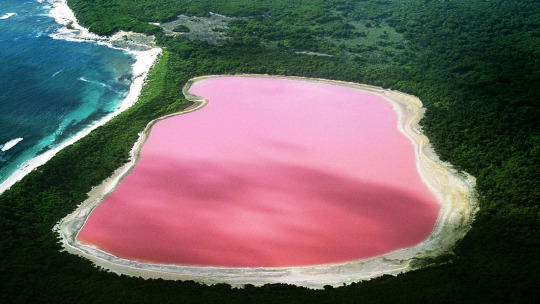
The Lake Retba (Lac Rose meaning Pink lake) - It is named for its pink waters caused by Dunaliella salina algae and is known for its high salt content, up to 40% in some areas.
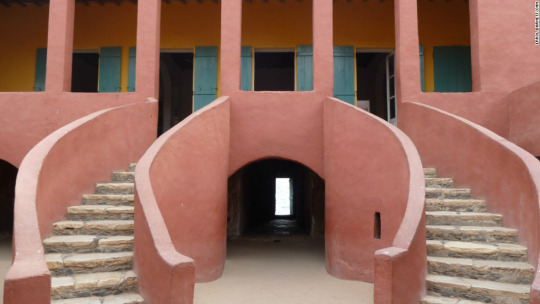
The House of Slaves and its Door of No Return is a museum and memorial to the Atlantic slave trade on Gorée Island, 3 km off the coast of the city of Dakar, Senegal. Its museum, which was opened in 1962 and curated until Boubacar Joseph Ndiaye's death in 2009, is said to memorialize the final exit point of the slaves from Africa.
While historians differ on how many African slaves were actually held in this building, as well as the relative importance of Gorée Island as a point on the Atlantic Slave Trade,visitors from Africa, Europe, and the Americas continue to make it an important place to remember the human toll of African slavery.
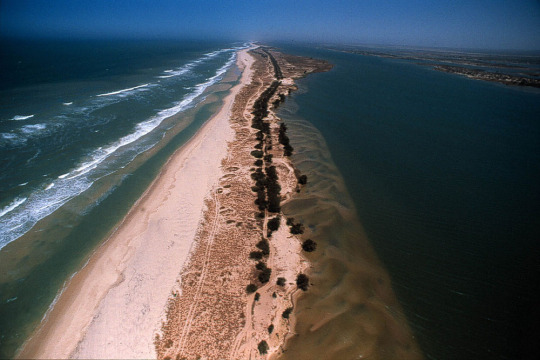
The Langue de Barbarie is a thin, sandy peninsula, adjacent to the Atlantic Ocean, located in western Senegal, in the neighborhood of the city of Saint-Louis. The peninsula separates the ocean from the final section of the Senegal River.

The Great Mosque of Touba is a mosque in Touba, Senegal. It was founded by Amadou Bamba in 1887 and completed in 1963. Bamba died in 1927 and is interred inside the mosque. Since his death the mosque is being controlled by his family.
Some interesting facts about Senegal
1. In the 16th century when the Portuguese visited the country’s coast, the fishermen said “sunu gaal”, which translates into “these are our boats”. The Portuguese, who understood nothing, simply named their land “Senegal”. Classic colonizers!!
2. Senegal’s location towards the west coast made it a hub for the international slave trade of the 18th and 19th century. Gorée Island, in particular, became a major transit point of the Atlantic Slave Trade.
3. In contemporary times, Senegal is very close to France. In fact, the very flag of Senegal has adopted the French Tricolor style. So the flags of both look the same, except for the color
4. Senegal is the only country in West Africa which wasn’t overrun by a military coup. Its democratic stability has earned it many allies in Europe and the Americas.
5. The common lingo of Senegal has a word called, “Teranga”. It has a very sweet and hospitable meaning and has become the identity of Senegalese people. It means helping a person to come to your land and settle down.
6. Dakar is home to the tallest statue in Africa. The African Renaissance Monument built in 2010, stands at an impressive 49 m, but still a meter short of a half-century.
7. Senegal is a paradise for footballers. Many prominent players like El Hadji Diouf, Henri Camara, Ferdinand Coly, Bouna Coundoul, etc. have been inducted into the European League from this country.
8. Senegal’s grasslands have given the country its two national symbols, the baobab tree, and the red lion.
Questions
1. Are you from Senegal or know someone from there?
2. Are you interested in learning Wolof?
3. What’s your favorite thing about Senegal?
4. Do you know anything about Senegal I forgot to mention?
5. Which country/Island do you think I should share about next?
PLEASE INFORM ME IF THERE IS ANY MISTAKE SO I CAN CORRECT IT. THANK YOU :)
*I know I said ISY project is about unknown/less talked about countries but I thought I should share about Senegal since I love it’s people and wanted to know more about their culture.
+ about ISY mini project
+ Previous ISY countries : VANUATU, KYRGYZSTAN .
#I SEE YOU#ISY mini project#SENEGAL#WOLOF#languages#langblr#languageblr#studyblr#history#geography#africa#countries#dakar
3 notes
·
View notes
Photo

Le Président Sénégalais Macky Sall (à droite) reçoit l'épée de El Hadj Omar Tall du Premier ministre français Edouard Philippe, au Palais de la République à Dakar, Sénégal, le 17 novembre 2019. Le Premier ministre français Edouard Philippe retourne au président Macky Sall l'épée de ce illustre chef religieux et résistant sénégalais du XIXème siècle, jusqu'ici exposé au musée des Invalides à Paris. El Hadj Omar Tall était un guerrier et un chef mystique, qui a fondé un empire toucouleur qui englobait une grande partie de ce qui est aujourd'hui la Guinée, le Sénégal et le Mali. https://www.instagram.com/p/CTlmIogAkOK/?utm_medium=tumblr
0 notes
Text

The battle to get Europe to return thousands of Africa’s stolen artifacts is getting complicated
In 1890, the French staged a bloody siege in the Segou royal palace, the capital of the Toucouleur empire that spanned modern day Guinea, Senegal and Mali. This siege and the violent capture of the city of Ouossebougou in 1890 marked the end of the Toucouleur empire and the transfer of control of the region to French colonial rule.
In addition to the loss of lives and the destruction of property, the French officials plundered over a thousand pieces of significant cultural heritage to the people—including the saber of the founder of the empire, El Hadj Omar Tall.
https://qz.com/africa/1758619/europes-museums-are-fighting-to-keep-africas-stolen-artifacts/
1 note
·
View note
Text
Samori Ture (c. 1830 – June 2, 1900), also known as Samori Toure, Samory Touré, or Almamy Samore Lafiya Toure, was a Guinean Muslim cleric, and the founder and leader of the Wassoulou Empire, an Islamic empire that was in present-day southeastern Guinea and was also part of north-eastern Sierra Leone, part of Mali and part of northern Côte d’Ivoire. Samori Ture was a deeply religious Muslim of the Maliki jurisprudence of Sunni Islam.
Ture resisted French colonial rule in West Africa from 1882 until his capture in 1898. Samori Ture was the great-grandfather of Guinea’s first president, Ahmed Sékou Touré.
Early life and career
Samori Ture was born c. 1830 in Manyambaladugu (in the Konyan region of what is now southeastern Guinea), the son of Dyula traders. He grew up as West Africa was being transformed through growing contacts and trade with the Europeans in commodities, artisan goods and products. European trade made some African trading states rich. The trade in firearms changed traditional West African patterns of warfare and heightened the severity of conflicts, increasing the number of fatalities. Early in his life, Ture converted to Islam.
In 1848, Samori’s mother was captured in the course of war by Séré-Burlay, of the Cissé clan. He then went to exchange himself for his mother as a result of his love for her. After arranging his mother’s freedom, Samori entered into service to the Cissé, and learned to handle firearms. According to tradition, he remained “seven years, seven months, seven days” before fleeing with his mother.
He joined the Bérété army, the enemies of the Cissé, for two years before rejoining his people, the Kamara. Named Kélétigui (war commander) at Dyala in 1861, Ture took an oath to protect his people against both the Bérété and the Cissé. He created a professional army and placed close relations, notably his brothers and his childhood friends, in positions of command.
Expansion through the Sudan
In 1864, El Hadj Umar Tall died; he had founded the aggressive Toucouleur Empire that dominated the Upper Niger River. As the Toucouleur state lost its grip on power, generals and local rulers vied to create states of their own.
By 1867, Toure was a full-fledged war commander, with an army based at Sanankoro in the Guinea Highlands, on the Upper Milo, a Niger River tributary. Toure had two major goals: to create an efficient, loyal fighting force equipped with modern firearms, and to build a stable state.
By 1876, Samori was importing breech-loading rifles through the British colony of Freetown in Sierra Leone. He conquered the Buré gold-mining district (now on the border between Mali and Guinea) to bolster his financial situation. By 1878 he was strong enough to proclaim himself faama (military leader) of his Wassoulou Empire. He made Bissandugu his capital and began political and commercial exchanges with the neighboring Toucouleur.
In 1881, after numerous struggles, Ture secured control of the key Dyula trading center of Kankan, on the upper Milo River. Kankan was a center for the trade in kola nuts, and was well sited to dominate the trade routes in all directions. By 1881, the Wassoulou Empire extended through the territory of present-day Guinea and Mali, from what is now Sierra Leone to northern Côte d’Ivoire.
Ture conquered the numerous small tribal states around him and worked to secure his diplomatic position. He opened regular contacts with the British colonial administration in Sierra Leone. He also built a working relationship with the Fulbe (Fula) Imamate of Futa Jallon.
First battles with the French
The French began to expand in West Africa in the late 1870s, pushing eastward from Senegal to reach the upper reaches of the Nile in what is now Sudan. They sought to drive southeast to link up with their bases in Côte d’Ivoire. These actions put them directly into conflict with Ture.
In February 1882, a French expedition attacked one of Ture’s armies that was besieging Keniera. Ture drove off the French, but he was alarmed at the discipline and firepower which their troops commanded.
He approached dealing with the French in several ways. First, he expanded southwestward to secure a line of communication with Liberia. In January 1885 he sent an embassy to Freetown, the capital of Sierra Leone and a Crown Colony of the British, offering to put his kingdom under British protection. The British did not want to confront the French at this time, but they allowed Ture to buy large numbers of modern repeating rifles.
When an 1885 French expedition under Col. A. V. A. Combes attempted to seize the Buré gold fields, Ture counterattacked. Dividing his army into three mobile columns, he worked his way around the French lines of communication and forced them to withdraw quickly.
War and defeat
Samori’s army was well equipped with modern firearms and a complex structure of permanent units. His army was divided into an infantry wing of sofa (Mandinka for infantry, usually slaves) and a cavalry wing. By 1887, Samori could field 30,000 to 35,000 infantry and about 3,000 cavalry, in regular squadrons of 50 each. But, the French did not want to give him time to consolidate his position. Exploiting the rebellions of several of Ture’s subject tribes, who were animist and resisted Islam, the French continued to expand into his westernmost holdings. They forced Ture to sign several treaties ceding territory to them between 1886 and 1889.
Between 1889 and 1894, Ture’s army ravaged Wassoulou and expelled or enslaved most of the population.
In March 1891, a French force under Colonel Louis Archinard launched a direct attack on Kankan. Knowing his fortifications could not stop French artillery, Touré began a war of manoeuvre. Despite victories against isolated French columns (for example at Dabadugu in September 1891), Ture failed to push the French from the core of his kingdom. In June 1892, Col. Archinard’s replacement, Humbert, leading a small, well-supplied force of picked men, captured Ture’s capital of Bissandugu. In another blow, the British had stopped selling breech loaders to Ture in accordance with the Brussels Convention of 1890.
Ture shifted his base of operations eastward, toward the Bandama and Comoe River in Dabakala. He instituted a scorched earth policy, devastating each area before he evacuated it. Though this manoeuvre cut Ture off from Sierra Leone and Liberia, his last sources of modern weapons, it also delayed French pursuit. After the spring of 1893, the French partially succeeded in cutting off Ture’s sources of weapons which was supplied by the British traders since the late 1880s. Ture tried to negotiate with the British in their colonial domains in Ghana to work against the French interest, but the British would not intervene directly against France.
He tried to build an anticolonial alliance with Ashanti Empire but failed when Ashante was defeated by the British and fighting between Ture and British soldiers in 1897. The fall of other anti-colonial armies, particularly Babemba Traoré at Sikasso, permitted the French colonial army to launch a concentrated assault against Touré. By 1898, he lost almost all of his territory and fled into the mountains of western Ivory Coast. He was captured on 29 September 1898 by the French captain Henri Gouraud and was exiled to Gabon despite his request to return to southern Guinea.
Ture died in captivity on an island in Ogooué River, near Ndjolé on June 2, 1900, following a bout of pneumonia. His tomb is at the Camayanne Mausoleum, within the gardens of Conakry Grand Mosque.
His Legacy:
• He is considered a powerful example of resistance to French colonial forces and known for his building collaboration among diverse groups, as well as his war strategies.
• His great-grandson, Ahmed Sékou Touré, was elected as the first President of Guinea after it became independent.
Source:
https://en.wikipedia.org/wiki/Samori_Ture
U.S. Library of Congress
Samori Touré – A Warrior, Slave Trader, Entrepreneur and Ruler of the Mandinka Empire: Samori Ture (c. 1830 – June 2, 1900), also known as Samori Toure, Samory Touré, or Almamy Samore Lafiya Toure, was a Guinean Muslim cleric, and the founder and leader of the Wassoulou Empire, an Islamic empire that was in present-day southeastern Guinea and was also part of north-eastern Sierra Leone, part of Mali and part of northern Côte d'Ivoire.
1 note
·
View note
Text
Toucouleur Conqueror
El Hadj Umar Tall, a Toucouleur conqueror who swept across West Africa from Fouta Djallon, invaded Segou and found an already shaken Bambara Empire. Well trained, regimented, and equipped with modern firearms, Umar Tall’s mujahideen readily and easily defeated the Bambara, seizing Ségou itself on March 10, 1861. Umar made his son Ahmadu Tall king or “Faama“, and declared an end to the Bambara…
View On WordPress
0 notes